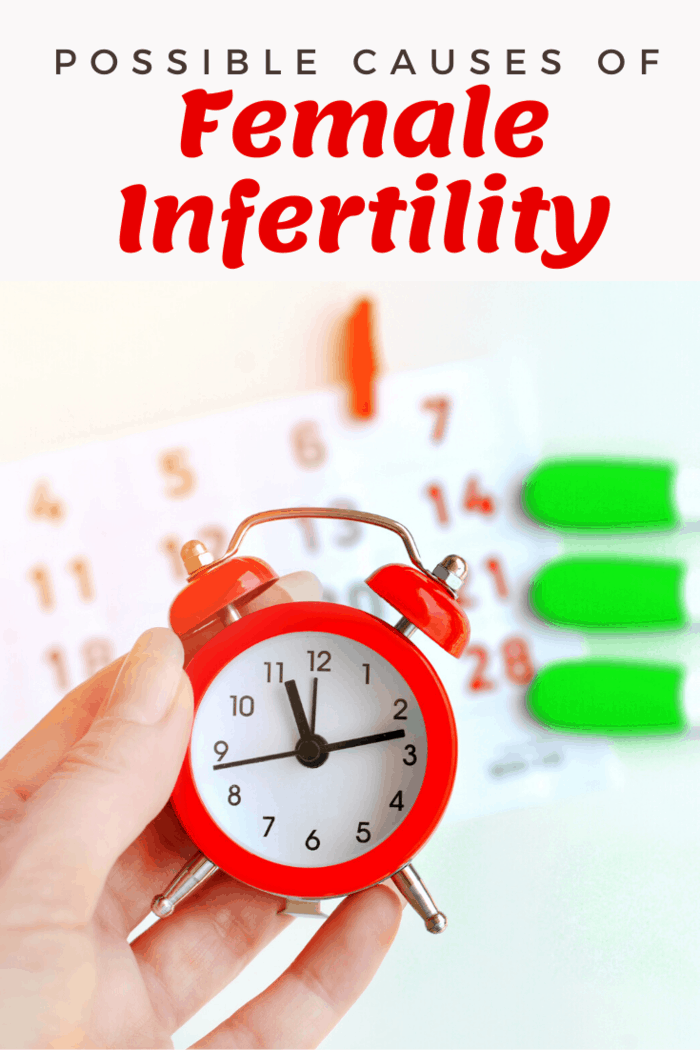One of a woman’s most unique functions and characteristics is her innate ability to bear a child. Generally, a woman is meant to bear a child. Her body goes through the monthly changes that it does, certainly, so that she can be able to pursue that function of child-bearing. But, unfortunately, it’s also known to many that infertility is quite common. Many women across the globe suffer from this problem. When you’re suffering from infertility, it’s common to feel so much pressure, pain, and heaviness in your heart. But, the good news is that times have now changed thanks to the advancements in medicine and technology. Infertility shouldn’t feel like a permanent sentence. Technology has paved the way for many possible means of allowing one to conceive, despite the difficulties that you go through. Here, you’ll learn more about female infertility and its possible causes. That way, should you also have some reproductive health difficulties, you also have more awareness regarding your condition.

Possible Causes Of Female Infertility
First, The Basics On What Infertility Is
Infertility can be understood as the inability to get pregnant after at least one year of frequent intercourse.
Male infertility, female infertility, or a combination of both male and female infertility affects millions of people in the United States (HHS).
Indeed, about 18 percent of all couples in the US have trouble getting pregnant.
Female factors cause a third of all infertility cases, while another third of the cases can be attributed to malefactors.
The rest of the cases are either unexplained or caused by a combination of male and female factors.
The causes of female infertility can be quite difficult to diagnose.
Luckily, with the assistance of a reliable OB/GYN, most of the causes are diagnosed and treated successfully.
Below is a rundown of some possible causes of female infertility.
Now, The Possible Causes Of Infertility
Failure to Ovulate
Women of childbearing age should ovulate once every month.
This is precisely the reason for one’s monthly cycle and why you go through your monthly period.
However, this may not happen for some reason meaning that when they have intercourse, they cannot get pregnant.
Failure to ovulate can result from factors such as weight fluctuations, stress, polycystic ovarian syndrome (WebMD), raised prolactin levels, and problems with the pituitary glands.
Remember to be proactive and visit an OBGYN for annual health exams.
Primary Ovarian Insufficiency
Primary Ovarian Insufficiency is a condition whereby a woman’s ovaries aren’t functioning as they should during her fertile years.
Polycystic Ovarian Syndrome
This diagnosis is a disease whereby the woman has an imbalance in the hormones, which can also cause a disruption in the woman’s ovulation process.
Implantation Failure
Implantation failure happens when the embryo fails to nest in the uterus or a woman simply undergoes an early miscarriage.
It can result from embryonic or uterine factors.
While most causes of implantation failure are hard to pinpoint, some possibilities include the embryo’s genetic defect, progesterone resistance, and scar tissue within the endometrial cavity, among others.
Failure of an Egg to Mature Properly
In some cases, eggs may not mature properly.
Some of the factors that can lead to this issue include lack of specific proteins, obesity, and PCOS.
Endometriosis
Endometriosis is associated with the growth of endometrial cells outside the uterus.
Research has established that there is a close link between female infertility and endometriosis.
Indeed, about 40 percent of women with endometriosis are infertile, and about 50 percent of women with infertility issues have endometriosis.
However, scientists are yet to establish how endometriosis causes infertility.
If you’ve been diagnosed with endometriosis, you may also want to have more information about this disease.
Uterine Fibroids
Another cause of infertility in women could be problems in the uterus itself, according to Healthline.
There could also be some unwanted growth in the uterus, known as uterine fibroids.
They are noncancerous, and in some cases, they can cause some symptoms, depending on their location and size.
Uterine fibroids are known to cause between five percent and ten percent of all infertility cases in women.
They usually cause infertility if they affect the shape of the uterus, the position of the cervix, or blood flow to the uterus.
In some cases, they even block the fallopian tubes preventing the sperm from getting to the egg for fertilization.
For some women, despite the presence of uterine fibroids, they may still be able to bear a child.
But pregnancy could be difficult and risky.
There are even those who experience difficulty in carrying their baby to full term.

The Takeaway
Overall, it’s apparent that infertility is quite a common issue.
It’s also clear that female infertility can result from several factors, which can make it difficult to diagnose.
Luckily, in most cases, it can be diagnosed and treated.
If you are looking for a reliable OB/GYN to help you with infertility issues in Arlington, VA, Capital Women’s Care Division 67 is an excellent women’s care facility to visit.
With the right OB/GYN, this is also one that you can cure, such that you can now at least bear a child.
Infertility doesn’t have to feel like an end sentence where you have no light at the end of the tunnel.
If you know for a fact that you’re having a hard time bearing a child, you should give it much attention now.
